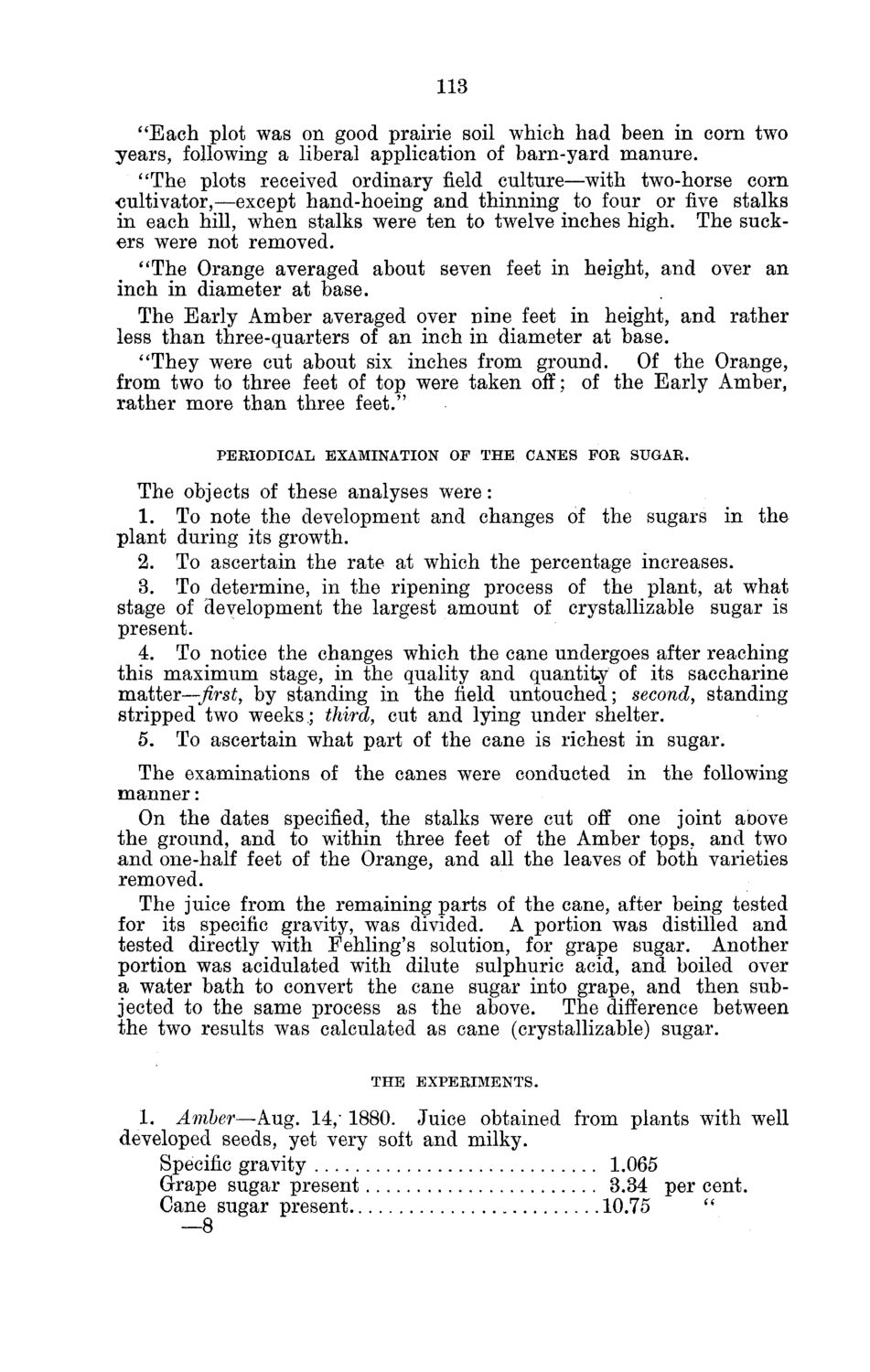| |
| |
Caption: Board of Trustees Minutes - 1880
This is a reduced-resolution page image for fast online browsing.

EXTRACTED TEXT FROM PAGE:
113 "Each plot was on good prairie soil which had been in corn two years, following a liberal application of barn-yard manure. "The plots received ordinary field culture—with two-horse corn cultivator,—except hand-hoeing and thinning to four or five stalks in each hill, when stalks were ten to twelve inches high. The suckers were not removed. "The Orange averaged about seven feet in height, and over an inch in diameter at base. The Early Amber averaged over nine feet in height, and rather less than three-quarters of an inch in diameter at base. "They were cut about six inches from ground. Of the Orange, from two to three feet of top were taken off; of the Early Amber, rather more than three feet." PERIODICAL EXAMINATION OF THE CANES FOE SUGAR. The objects of these analyses were: 1. To note the development and changes of the sugars in the plant during its growth. 2. To ascertain the rate at which the percentage increases. 3. To determine, in the ripening process of the plant, at what stage of development the largest amount of crystallizable sugar is present. 4. To notice the changes which the cane undergoes after reaching this maximum stage, in the quality and quantity of its saccharine matter—j^rstf, by standing in the field untouched; second, standing stripped two weeks.; third, cut and lying under shelter. 5. To ascertain what part of the cane is richest in sugar. The examinations of the canes were conducted in the following manner: On the dates specified, the stalks were cut off one joint aoove the ground, and to within three feet of the Amber tops, and two and one-half feet of the Orange, and all the leaves of both varieties removed. The juice from the remaining parts of the cane, after being tested for its specific gravity, was divided. A portion was distilled and tested directly with Fehling's solution, for grape sugar. Another portion was acidulated with dilute sulphuric acid, and boiled over a water bath to convert the cane sugar into grape, and then subjected to the same process as the above. The difference between the two results was calculated as cane (crystallizable) sugar. THE EXPERIMENTS. 1. Amber—Aug. 14," 1880. Juice obtained from plants with well developed seeds, yet very soft and milky. Specific gravity 1.065 Grape sugar present 3.34 per cent. Cane sugar present 10.75 " —8
| |